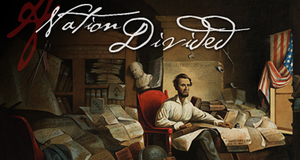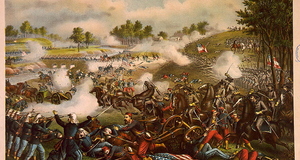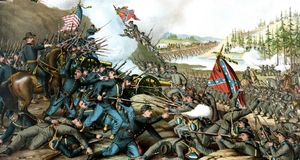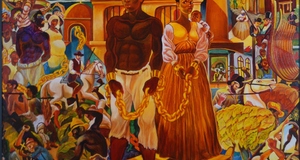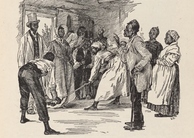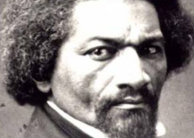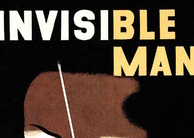Featured Article:The "Roving Ambassador:" Bayard Rustin's Quaker Cosmopolitanism and the Civil Rights MovementRustin Abroad: India, Africa and American Civil RightsFollowing his release from prison, Rustin began another FOR lecture circuit around the country, visiting youth camps and college campuses to promulgate Quaker-Gandhian methodologies of nonviolence. In the weeks that followed, Rustin would organize the pending Journey of Reconciliation, a nonviolent campaign aimed to challenge segregated interstate buses in the South. Collaborating with activists from Congress of Racial Equality (CORE) and the American Friends Service Committee (AFSC), FOR planned the first Freedom Ride through Virginia, North Carolina, Tennessee and Kentucky. In a letter to the NAACP detailing the procedures of the trip, Rustin asserted: "It is our belief that Jim Crowism will ultimately be defeated only as individuals refuse to comply with unjust practices dividing people from one another" (Rustin 95). On April 9, 1947, activists began a trip that would prompt severe opposition, threats of violence and arrests. In a bus station in Durham, North Carolina, the protestors were greeted by an obstreperous crowd of angry segregationists; Rustin and others were beaten, arrested and sentenced to hard labor in a chain-gang. Rustin later commented: "When we went into the buses of the South, we knew that there would be some violent reactions brought to the surface [. . .] We also had to accept violence unto ourselves. [. . .] You cannot take a stance for truth and justice without [. . .] causing some suffering" (Anderson 120). Although the journey did not permanently subvert Jim Crow laws, the national publicity following FOR's protests would galvanize other nonviolent movements, especially the well-known Freedom Rides of the 1960s. "My experience here has been staggering. In this dirty, poor, ambitious city, I find much that I find in Harlem. We [African Americans] left [Africa] in 1619, yet the people here sing, walk, laugh, cry, dance, and strive in a way that is like 125th Street and Lenox Avenue. I seem to know and to understand them as I do nowhere else but in Harlem" (Rustin 146). The momentous events of the Journey of Reconciliation catapulted Rustin into a four-month lecture tour throughout India. During his journey abroad, Rustin would gain firsthand exposure to Gandhian techniques of nonviolent protest. His sudden urge to travel may have been inspired by a few factors. First, Rustin routinely expressed a deep concern for global affairs, especially anticolonial liberation movements. To be sure, Rustin likened America's "Jim Crowism" to oppressed peoples challenging colonial sovereignty abroad. Second, Rustin's early activism demonstrated an effort to recast Quaker ideals (e.g. recognizing nonreligious pacifism) in contemporary political contexts. As such, Rustin questioned how travel could enrich Quaker philosophy through an international lens and how Quaker philosophy, a system of Western thought, might engage the urgent political questions of the East. In 1948, the AFSC assigned Rustin as its representative to an international pacifist seminar in India. On October 1, 1948, Rustin stopped to visit London where he was greeted by a deluge of invitations to lecture on pacifist activism and American civil rights (Anderson 130). After a successful lecture series throughout the city, Muriel Lester, a delegate of FOR's international branch and former friend of Mahatma Gandhi, invited Rustin to India. Also a fierce critic of the British Raj, Lester had been invited by Devadas Gandhi (the fourth son of Mahatma) and offered to introduced Rustin. Devadas and Rustin had a lively discussion on American race relations, the political climate in India and Gandhian methodologies of nonviolence. On December 17, Rustin was invited to the All-India Congress Party convention, where he was introduced to Prime Minister Jawaharal Nehru and Deputy Prime Minister Sardar Patel (Anderson 131). Rustin sponsored lectures and workshops detailing how Quaker principles of pacifism had instigated some considerable social changes in the American political landscape.Impressed auditors, however, attributed Rustin's success to not only his persuasive rhetoric and political acumen, but the fact that he was an African-American Quaker. In a letter to A. J. Muste, Lester wrote that Rustin's success in India was "three times as much as [that of] a white pacifist" (132). The political context bolstering Lester's comment alluded to the steady deterioration of pacifist ideology following Gandhi's assassination; that is, India had lost its most vehement proponent of pacifism, and enthusiasm for nonviolent action was flagging among college students and youth who wanted immediate results. Indeed, many believed that the timely arrival of Rustin's Quaker message (only nine months after Gandhi's assassination) had the power to stunt the growth of violent nationalism. Another letter reinforced Lester's previous claim: "[Rustin] can do a job here that no white westerner can do at the moment. [. . .] We need a man like him in the colleges just now" (133). The message evinced in these epistles suggests that India needed a spokesperson, like Rustin, who could inject new vitality into Gandhian principles. For the next four weeks, Rustin adapted to Indian culture. Anderson states: Traveling through India, Rustin did not view his surroundings as with the lens of a tourist camera but identified himself with forms of the national culture. In small towns and villages, the adopted he Indian manner of greeting. [. . .] Rustin discarded his Western attire in favor of Gandhian calico and sandals. He developed a taste for Indian cuisine. When dining in rural areas, he joyfully squatted on the floor, as his hosts did [. . .]. (132) Though happily ensconced in the culture, Rustin remained deeply troubled by the uncertain future of Gandhian principles in India. After his trip, Rustin told the FOR committee that he feared that peaceful activism in India would soon collapse into violent nationalism: "There are the Gandhi youth groups which do stand for his principles, and others which are convinced of the valid use of nonviolence," but, he continued, the Indian movement is "nonviolent in means [. . . but] essentially violent in its end" (Rustin 133). Rustin expressed to pacifist colleagues in a letter dated March, 18, 1949, that he left India sensing that beneath the legacy of Gandhian pacifism, a substratum of violence simmered: "[. . .] Soon the Communists and Socialists and extremist Hindus will have have tremendous effects among the younger people of India" (Rustin 124). These anxieties led him to reflect critically on the connection between Indian and American politics: if pacifism floundered, would violence ensue? Will civil rights pacifism in America decay into violence? With these questions in mind, Rustin deepened his commitment to subverting Jim Crow nonviolently. It is worth pausing to reflect on the positive reception of Rustin's Quaker message abroad. Drawing on the work of the public intellectual and literary historian, Edward Said, we can understand, in part, why Rustin's dissemination of Quaker ideas were received positively in the Eastern/Gandhian philosophical tradition. A crucial concept for Postcolonial studies, Said's notion of Orientalism interrogates Western attitudes toward cultural 'others,' which have divided the world into two spheres: the East (Occident) and West (Orient). In 1978, Said would publish his controversial text entitled Orientalism, which studies Western beliefs, discourses, representations, epistemologies and attitudes that construct the East as inferior, or 'Other.' According to Said, dominant articulations of Orientalism represent Eastern societies as underdeveloped and primitive. Rather than understanding the Orient as the 'Other,' Quaker philosophy engaged Eastern traditions in a way that opened a space for creative, transnational dialogue that shed light on American race relations. Rustin's lectures ascribed a great significance to Eastern thought, thus underscoring the connection between Quaker and Gandhian principles throughout the following decades of decolonization and civil rights. Rustin's work was highly praised and Lester sent a letter to Muste requesting he extend Rustin's stay in India for several more months. Muste, however, declined Lester's request in a uncharacteristically strict tone: Bayard's qualities are such that he will practically never be in any country without the demand developing that he stay longer [. . .] We might easily slip into a situation where [. . .] he was a roving ambassador of the [International] FOR rather than a member of the [American] FOR staff [. . .] I am disposed to think that Bayard ought not to take on this roving ambassador role at this stage [. . .] He needs to develop his own spirit at certain points before undertaking that kind of mission. (Anderson 133) After settling back in America, the FOR advisors joked and gave Rustin the sobriquet, "Rustiji" (134). But only after a week of being home, Rustin was summoned by the court of Hillsboro, North Carolina, to serve his sentence from two years before for his participation in the Journey of Reconciliation. For the next thirty days, Rustin would be subjected to hard labor in a chain-gain camp located in Roxboro, North Carolina. In typical Quaker fashion, Rustin refused to let the injustices of Roxboro go unchallenged: in August 1949, Rustin published a five-article installment in the New York Post that provided a chilling account of his time at Roxboro: "[. . .] It was a very harrowing and ugly experience. People were hanged on the bars [of jail cells] by their wrists. [. . .] People were put into a hole -- just a hole in the ground -- for two or three days if they misbehaved. No toilet, nothing" (135). Exposing the dehumanizing injustices of the American penal system, he continued: "On one occasion when the guards insisted that I entertained then by dancing, I refused. They took out pistols and shot at the ground around my feet, trying to make me dance. Of course, I wouldn't do it" (135). To Rustin and FOR's surprise, the article inaugurated an uproar that energized prison reform across North Carolina and neighboring states. Anderson comments: "The Journey of Reconciliation, undertaken to reform the system of segregated bus transportation in the South, may be said to have achieved reform in a quite unintended direction" (136). Rustin used a major national publication to expose the inhumane procedures of penal institutions across the nation. Following Rustin's return from India, he remained preoccupied with the connection between global independence movements and African-American civil rights. Again, Rustin's Quaker pacifist tradition intersected with the Kantian Weltbürger as he pursued opportunities to politically engage West and South African anticolonial affairs. Anderson makes an interesting observation: "[Rustin] wished to gain from [African affairs] a deeper and broader understanding of the modern winds -- especially those of political self-determination -- that had begun blowing through areas of their continent" (141). By the early 1950s, Rustin had a deep interest in ways oppressed groups expressed and organized political dissent under the hegemony of colonial empire. Rustin wrote in a letter to A. J. Muste on November 30, 1952: I know that we have a part to play both in this country and Africa. [. . .] There is to my mind nothing that will help raise the cause of nonviolence in this country so much as our helping to raise in Africa further examples of the power of nonviolence against groups that are more formidable than the British were in India. (Rustin 144) Seeking to move political activism beyond nationalistic (American) borders, the notion of Kant's Weltbürger clearly shaped Rustin's appeal to Muste. He insisted emphatically that observing and participating in liberation movements abroad could advance the civil rights cause at home in America. In another letter to the African National Congress (ANC), Rustin expressed: "[. . .] I shall use in my efforts to interpret Africa to people of America in a four-month speaking tour from coast to coast in churches, colleges, and clubs [. . .] Such interpretation is of primary importance since the revolution which is gripping Africa should be understood by Americans. Africa is afire" (143). Drawing a parallel between American Jim Crow laws and colonial sovereignty, Rustin hoped to disseminate similar pacifist tactics abroad that would ensure a nonviolent decolonization process. Rustin appended the letter: "[ . . .] everywhere African nationalism is rising. I am convinced that peaceful solutions in some very real degree will depend on the nature of the response that the American people and government make to these very real and sincere peoples' revolutions" (143). Rustin reiterated to Muste and FOR's senior advisors that his involvement in African liberation movements would help promote and reinforce pacifist activism in the United States, particularly the South. Funded by FOR's race relations branch, the AFSC and a coalition called the American Committee on Africa, Rustin embarked on a lecture tour throughout Ghana and Nigeria in July 1952. Rustin stated that the impetus for his anticolonial lecture circuit was "to link the American pacifist movement with leaders of the West African independence struggle" (Anderson 143). Before flying directly to Ghana, Rustin insisted on attending the third World Conference of Friends, hosted by Oxford University. One conferee by the name of Godric Bader fondly recalls Rustin's closing speech: "[. . .] I remember Bayard saying, in singing tones, 'Christianity is a revolutionary faith.' The word revolutionary was typical of his whole approach to life" (144). Significantly, the Friends meeting would serve as the preamble to Rustin's African journey where a revolutionary faith was about to engage revolutionary politics. By the time Rustin arrived in Accra, Ghana, on August 29, the country had minimal autonomy from British rule, and was undergoing the difficult and protracted process of decolonization. Prime Minister Kwame Nkrumah welcomed Rustin and eagerly introduced him to other government officials working to establish a fully self-governed nation. Nkrumah assured Rustin that Gandhian pacifist practices would guide the struggle for independence, but in a letter to Norman Whitney, Rustin articulated a similar concern he had when leaving India: "Nonviolence here is one of expediency" and "hate fear, and potential violence" simmer just below the surface (145). Fully aware of the fragility of transitioning states and their susceptibility to violence, Rustin preached both Quaker and Gandhian principles to "assemblies of several thousand," including the "opening conference of the All African Trade Union Congress and [. . .] open-air rallies in Accra and Kumasi" (D'emilio 200). These enormous public rallies were of crucial importance for the circulation and reception of Rustin's message because his ideas reached Ghana's working class population; after all, Rustin knew that the people who attended the mass assemblies would be those working at the grassroots level to organize civil disobedience protests. In between lectures, Rustin often mentioned the powerful visceral connection he felt with the people of West Africa. In a beautiful letter to Whitney, he wrote: "My experience here has been staggering. In this dirty, poor, ambitious city, I find much that I find in Harlem. We [African Americans] left here in 1619, yet the people here sing, walk, laugh, cry, dance, and strive in a way that is like 125th Street and Lenox Avenue. I seem to know and to understand them as I do nowhere else but in Harlem" (Rustin 146). This feeling of connection ran deep with Quaker values of global interconnectedness, for this was the land of Rustin's ancestors. Long provides a thoughtful insightful into Rustin's emotional ties with African culture and politics: "Rustin was pleased to meet with the independence leaders and everyday Africans, learning about the land and history ignored in the history courses he had taken in West Chester" (142). Before his tour, he remained estranged from the struggles, people, art, customs and religions of Africa, and, forty years later as a gay, black, Quaker activist, he was just beginning to see how and where he fit within the larger historical narrative of his homeland. Leaving Ghana, Rustin continued on to Lagos, Nigeria, where he met the Nigerian independence leader, Nnamdi Azikiwe. The men held private talks in Azikiwe's private library, or what Rustin would later dub the "nerve center of the Nigerian independence movement" (Anderson 147). Also struggling to establish self-government from British rule, Nigeria was in the difficult process of decolonization. Rather than giving lectures and workshops on Gandhian nonviolence, Rustin concerned himself with the tedious bureaucratic work of studying the recently drafted Nigerian Constitution. Composed by the National Council of Nigeria and the Cameroons, the draft, Azikiwe explained, was inspired by the U.S. Constitution and underpinned by Gandhian principles. Significantly, Azikiwe expressed that "in Africa the Negro American is our standard of measurement" (147). By the time Rustin made his African tour in 1952, President Truman had passed Executive Order 9981, which abolished segregation of the armed forces. Indeed, such displays of racial progress in America had galvanized liberation movements around the globe, especially in West Africa. In this way, Rustin would later recall: "The admiration of the West African for the Negro American is astounding. I talked with men and women in every economic and political group, and found many of them measuring their progress by the Afro-American" (147). The pacifist techniques that achieved progress in America are what inspired liberation leaders, like Azikiwe, to couch his anticolonial campaign in traditions of nonviolent activism. As Rustin prepared to depart for America, Azikiwe invited him to return for a six-month lecture tour that would train Nigerian youth and political activists in Gandhian pacifism. This assignment would cause considerable tension at the FOR headquarters: while Muste and FOR advisers agreed that "there [was] a real tie-in between our work among Negroes and inter-racial work in Africa," many opined that FOR activism should focus advancing the race relations of African-Americans. In this way, Rustin felt that the FOR's political scope had become too myopic and was at odds with the objectives of Quaker cosmopolitanism. For Rustin, the struggle for liberation was a unified global effort, not a movement that contained activism and emphasized national difference. Rustin's exhilaration from his African journey was swiftly diminished after an event in Pasadena, California. On January 21, 1953, Rustin was arrested on a "morals charge," shortly after police found him engaged in a sexual act with two white men in a parked car. Rustin had always been an openly gay man, but his actions in a severely homophobic society resulted in a sixty-day prison sentence. Nonplussed, Muste and advisors at the FOR headquarters released a document on January 28, 1953, stating: "To our great sorrow Bayard Rustin was convicted on "morals charge" (homosexual) [. . .] We are grateful to Bayard for the many services he has rendered, and sorrow with him over the fact that he is not able to continue as an FOR staff member" (Rustin 152). Rustin's arrest also inaugurated debate at the American Friends' offices; Jeanette Jasmine responded to Rustin's disparagers, "With whatever fault he had [. . .] or whatever you wish to call his deviation from the accepted standard of living, he has so much more of value to give to those 99% of the human race that he should be not cast out of his job with the American Friends [. . .] Don't give him up" (153). The AFSC responded to the scandal with typical Quaker tolerance, but other organizations and institutions formerly allied with Rustin feared his association would besmirch their reputation. Hendrik Hertzberg of The New Yorker draws a parallel between Rustin's dismissal from FOR and the 2007 arrest of former Senator Larry Craig on charges of lewd conduct at the Minneapolis-St. Paul International Airport. Ironically, Hertzberg asserts, Senator Craig was a known proponent of anti-gay legislation, but had been convicted of a public homosexual act: "Bayard Rustin would appreciate the irony of a Republican senator engaging in a sort of unconscious civil disobedience" (Hertzberg 3). In a letter to his friend, John Swomley, Rustin expressed his optimism: "I know that, in God's way, [He] will turn ugliness and personal defeat to triumph [. . .]" (155). However this transformation would come about, Rustin realized that he had severely compromised his future role in the civil rights and global peace movements.Continued on Next Page » Suggested Reading from Inquiries Journal
Inquiries Journal provides undergraduate and graduate students around the world a platform for the wide dissemination of academic work over a range of core disciplines. Representing the work of students from hundreds of institutions around the globe, Inquiries Journal's large database of academic articles is completely free. Learn more | Blog | Submit Latest in African-American Studies |








